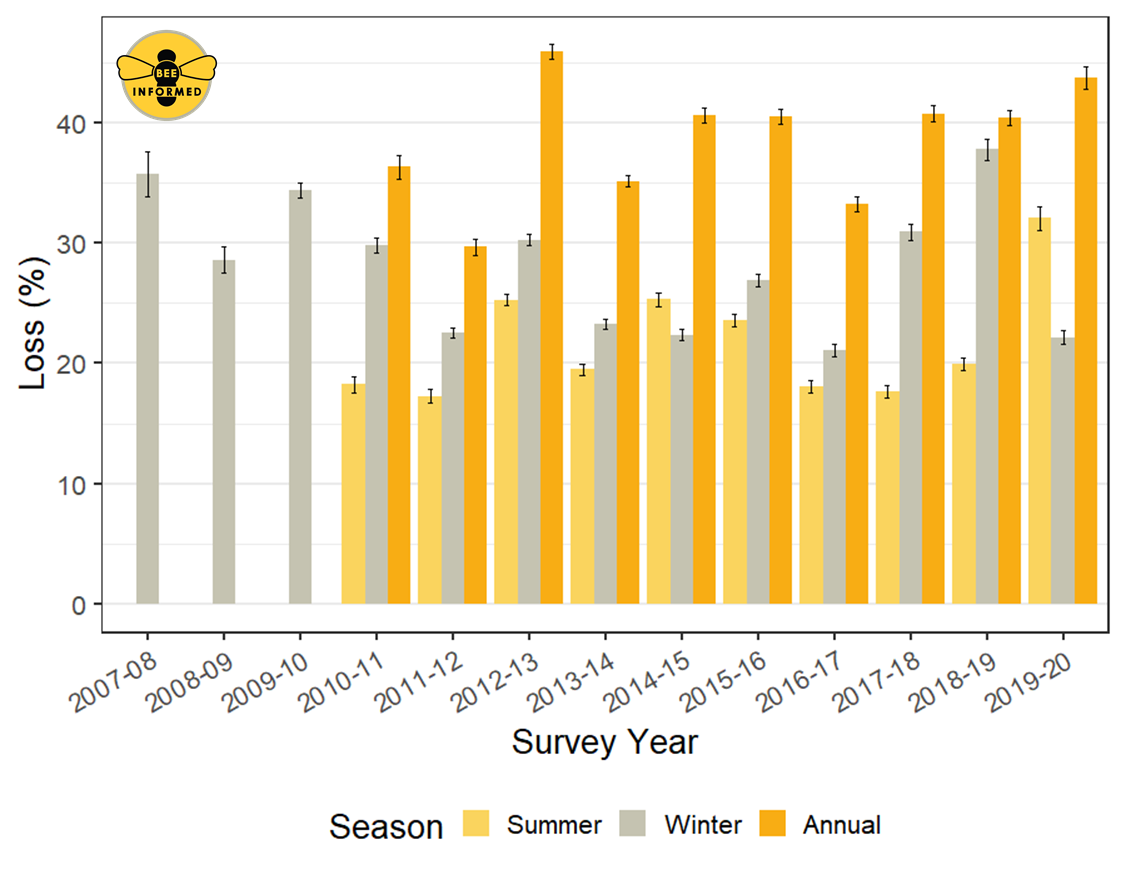
To mark Pollinator Week, the Bee Informed Partnership (BIP) recently released the results of its 2019-2020 National Honey Bee Colony Loss Survey.
Results revealed some interesting insights into the experiences of our honey bee colonies, and their keepers, across the country this past year.
From April 1st, 2019 to April 1st, 2020, nearly 44 percent of colonies were lost. Losses during Summer 2019 marked the highest ever recorded by BIP during that season, whereas losses during Winter 2019/2020 were the second lowest on record.
To see the most up-to-date information of colony loss in the United States, please visit BIP's Loss & Management Survey page.
Preliminary Results of the 2019-2020 National Honey Bee Colony Loss Survey



Reader Comments
R.C.
They Might Be Giants Birdhouse Soul Bee Bonnet: [Link]